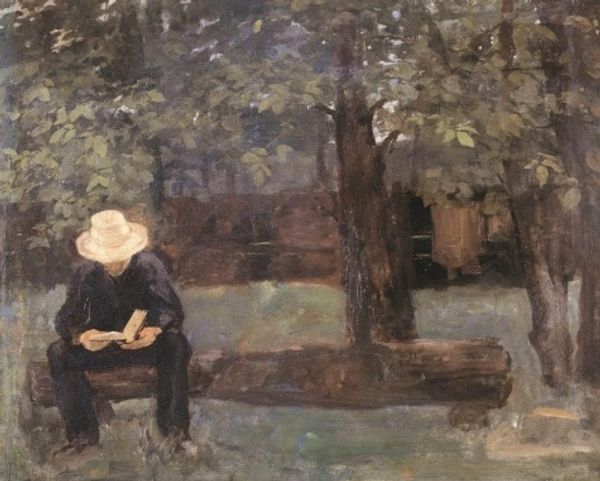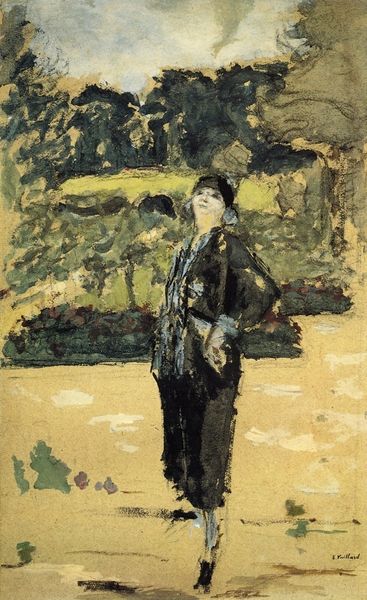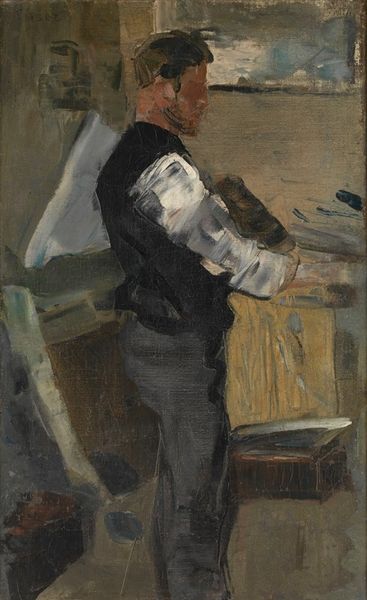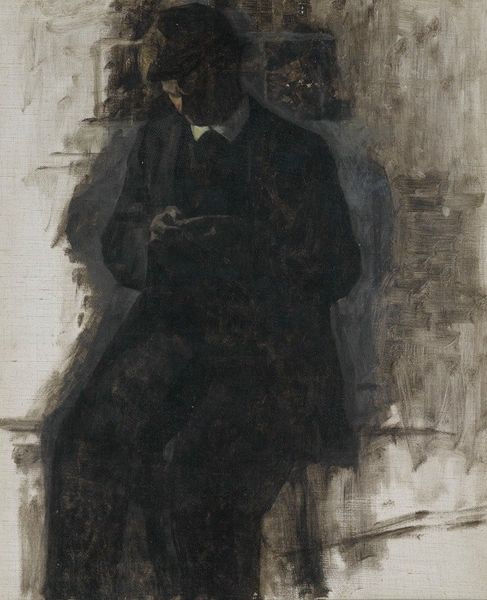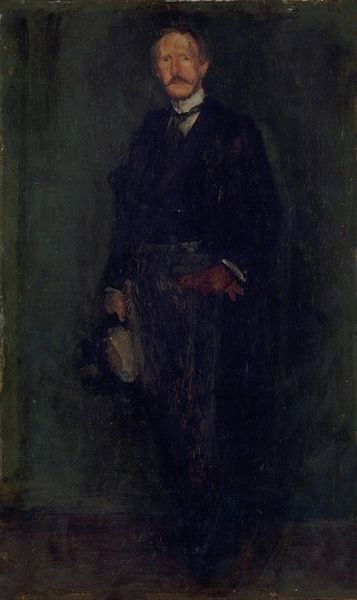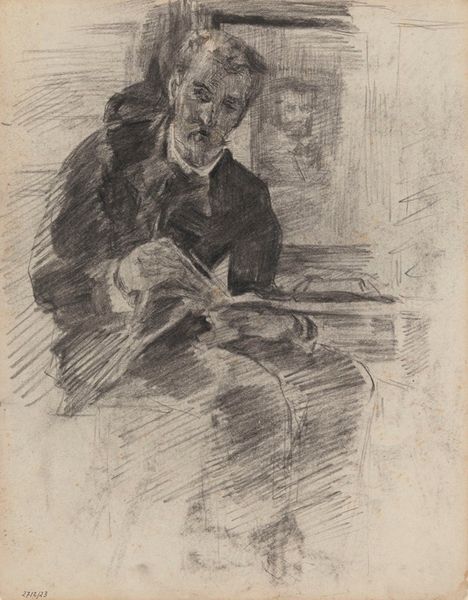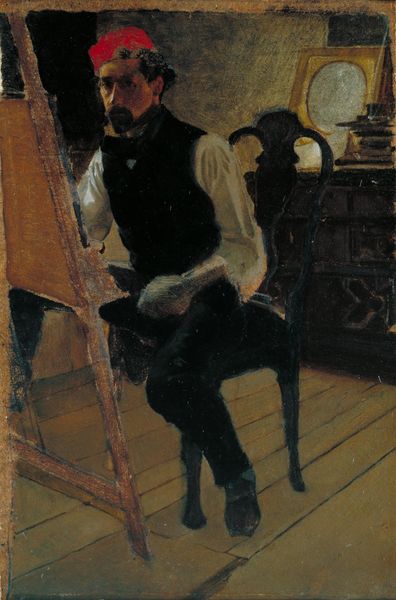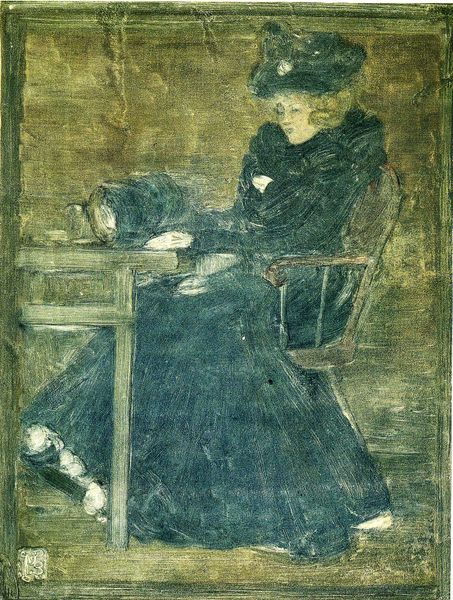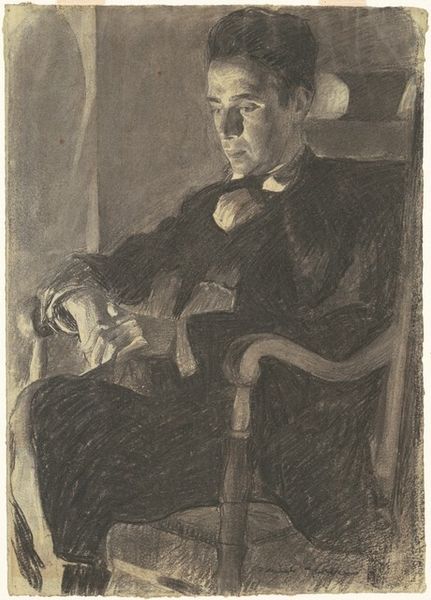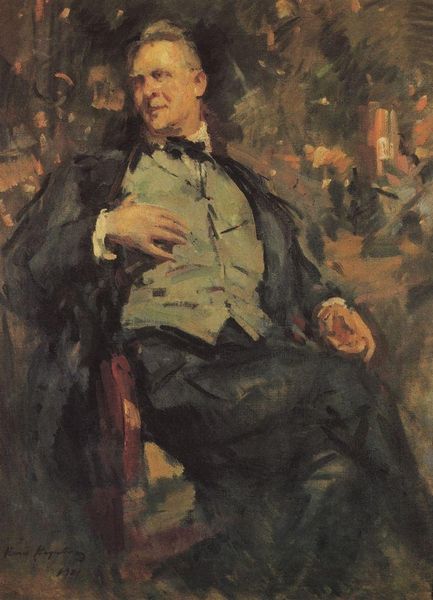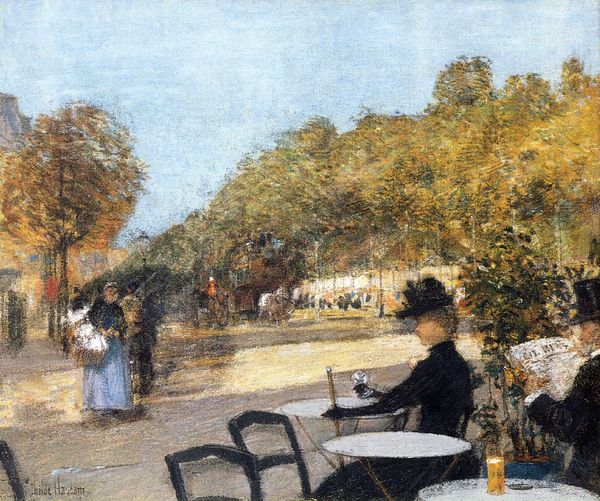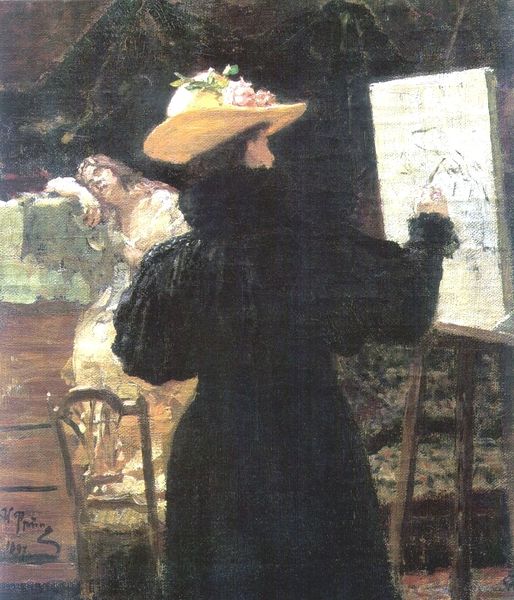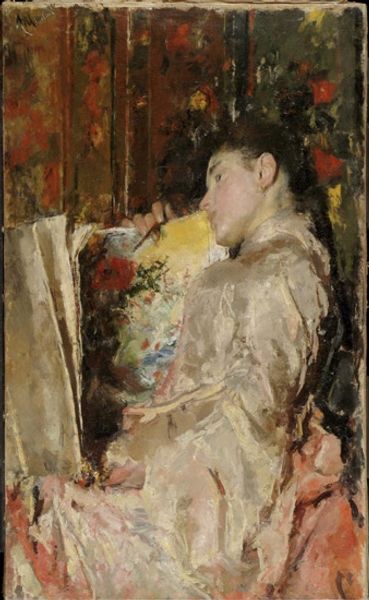
Copyright: Public Domain: Artvee
Curator: This oil painting from 1891 is titled "Jan Verkade," and it is by Richard Nicolaüs Roland Holst. It captures the artist Jan Verkade outdoors, seemingly at work on his own painting. Editor: It’s intriguing. Immediately, the dominant dark greens evoke a sense of tranquility and focus, a deliberate retreat into the shadowed spaces. Curator: The interplay of light and shadow is certainly key. Holst has used a fairly limited palette and rapid brushstrokes characteristic of Impressionism. Note how the composition places Verkade amidst the landscape, blurring the boundaries between artist and environment. Editor: Absolutely. And it isn't just visual harmony. Verkade is a symbolic representation of creativity rooted in the natural world; a figure positioned directly underneath a massive, maternal tree, absorbing all of its wisdom and bearing fruit in his painting. It also harkens back to classical depictions of muses in nature. Curator: Fascinating connection! Formally, the easel and canvas offer an area of relatively brighter light, and with the verdant and deep shadowing all around, Holst brings structure. Editor: The contrast emphasizes the idea of illumination through art. Verkade himself almost disappears, which could reflect how artists see themselves as conduits rather than generators. His hat is another strong visual element—a potent symbol of thought, imagination, or reflection. Curator: That echoes the introspective mood that pervades the canvas. The layering of brushstrokes seems almost impatient in places, giving it an ephemeral feeling despite the subject’s grounded placement. Editor: The canvas is certainly an important marker of reflection. The act of painting suggests a mirror of culture, revealing a collective conscious about nature. In that regard, the painting isn't so much a portrait, but a cultural emblem of Romanticism’s emphasis on nature's role in artistic production. Curator: I see how this blends Romantic sentiment with more contemporary impressionistic methods. I’ve come away with a newfound appreciation for the fusion of formal choices and that cultural dimension. Editor: As have I; its art historical placement, symbolism and visual organization tell the tale of Romanticism’s shift from the symbolic power of myth, and a move to nature.
Comments
No comments
Be the first to comment and join the conversation on the ultimate creative platform.
